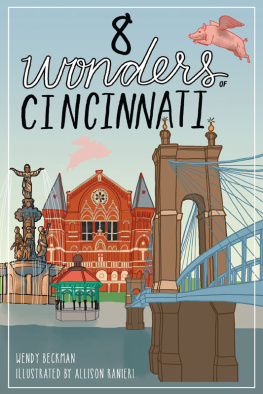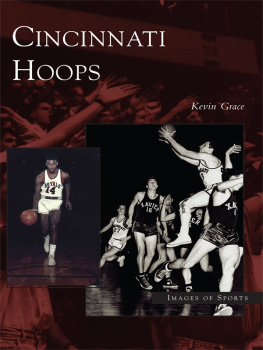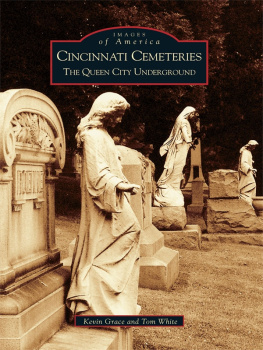


Published by The History Press
Charleston, SC
www.historypress.net
Copyright 2017 by Wendy H. Beckman and Allison Ranieri
All rights reserved
Cover illustrations by Allison Ranieri.
First published 2017
e-book edition 2017
ISBN 978.1.43966.384.4
Library of Congress Control Number: 2017955127
print edition ISBN 978.1.62585.898.6
Notice: The information in this book is true and complete to the best of our knowledge. It is offered without guarantee on the part of the author or The History Press. The author and The History Press disclaim all liability in connection with the use of this book.
All rights reserved. No part of this book may be reproduced or transmitted in any form whatsoever without prior written permission from the publisher except in the case of brief quotations embodied in critical articles and reviews.
I dedicate this book to my parents, Jessica and Bob Nielson, who taught me to find wonder all around me and to appreciate books of all sorts.
whb
To my parents, who introduced me to this wonderful city.
ar
CONTENTS
ACKNOWLEDGMENTS
Id like to thank Allison for bringing me into this project. Thanks, also, to Dottie Kuhn for her personal reflections on Ruth Lyons.
whb
Thanks to Alex for all the loving encouragement and support.
ar
Some content was previously published in Founders and Famous Families of Cincinnati (Clerisy Press, 2014), Portfolio (University of Cincinnati Lindner College of Business) and Cincinnati Magazine.
INTRODUCTION
The Seven Wonders of the Ancient World comprised a set of man-made marvels almost too extreme to be believed:
Great Pyramid of Giza
Colossus of Rhodes
Hanging Gardens of Babylon
Lighthouse of Alexandria
Tomb of Mausolus at Halicarnassus (from where we get the word mausoleum)
Statue of Zeus at Olympia
Temple of Artemis at Ephesus
In fact, scholars have argued that some of these wonders might be more fictitious than factual. However, whether fact or fiction, only one of these ancient wonders still exists: the Great Pyramid of Giza. So in 2007, based on online voting, a new list of Seven Wonders of the World was announced:
Chichen Itza, Mexico
Christ the Redeemer, Brazil
Great Wall, China
Machu Picchu, Peru
Petra, Jordan
Roman Colosseum, Italy
Taj Mahal, India
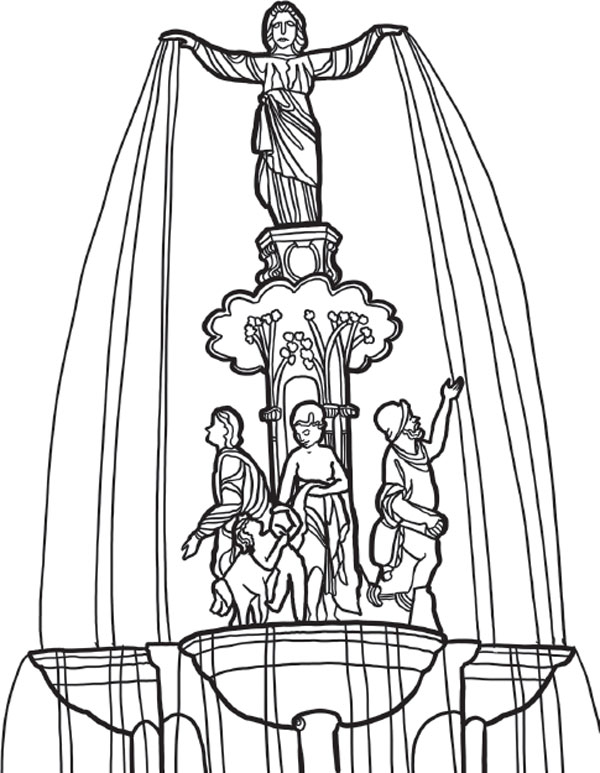
The Tyler-Davidson Fountain, The Genius of Water, anchors downtown Cincinnati in Fountain Square. Illustration by Allison Ranieri.
These new wonders spanned the globe, instead of being just from the Middle East or Europe. Many other lists of wonders have been developed, including a list of engineering wonders of the modern world and wonders of the natural world. But no one has named the seven wonders of Cincinnati.
Until now.
Not only that, but we also went one further and are declaring eight wonders of Cincinnati, representing architecture, art, commerce, customs, food, geography/nature, history and people. Who decided which wonders to choose? We did, informed by your opinions through social media and in person.
One things for sure, to paraphrase lyricist Bob Thiele (aka George Douglas) and George David Weiss: its a wonderful world. And Cincinnati is a wonderful city.
CHAPTER 1
ARCHITECTURE
CINCINNATI MUSIC HALL
Mention architecture in Cincinnati, and two topics come to mind: Art Deco and Samuel Hannaford. Cincinnati was established in 1788, so its existing structures represent the eighteenth through twenty-first centuries. Cincinnatis buildings reflect an eclectic assortment of architectural styles.
Although many world-renowned architects have contributed to the cityscape, Cincinnatis premier architect has to be Samuel Hannaford. Most of Hannafords work is in the Greater Cincinnati area, although other Hannaford buildings can be found throughout the Midwest, New England and the South. Hannaford created his Venetian Gothic masterpiece, Music Hall, in 1878 to house the May Festival.
Prior to Music Halls construction, the May Festival was going to be held every other year in its predecessor, Exhibition Hall. At the second May Festival, Theodore Thomas was on the podium. All was ready for the beginning of Richard Wagners Lohengrin. Just as the opening notes were played, however, the heavens opened and raindrops thundered on the metal roof of Exhibition Hall. Thomas signaled for the orchestra to stop. (A century later, Erich Kunzel was known to stop performances at Riverbend when racing motorboats violated the No wake restriction.) Thomas debated whether he should continue. Finally, the rain ceased and the concert went on.
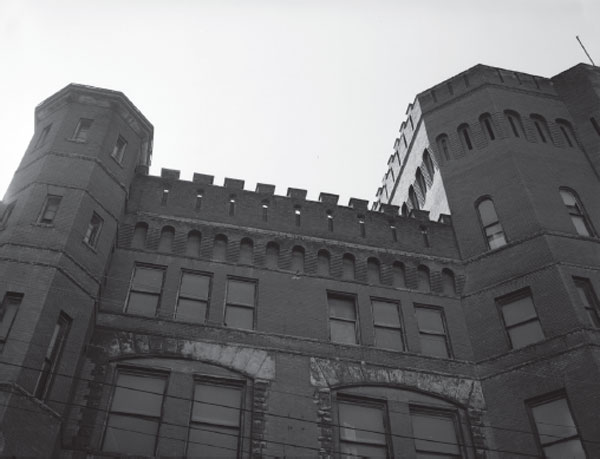
Ohio National Guard Armory, designed by Samuel Hannaford, detail of East Elevation Towers and Parapet, 14171437 Western Avenue, Cincinnati. Library of Congress.
Reuben Springer was in the audience that night and didnt want a repeat performance from the roof. He immediately proposed that he would put up $125,000half the cost of a new musical auditoriumif the community came up with the other half. In what might be the first case of crowdsourcing before GoFundMe or Kickstarter came along, Cincinnatians banded together, including schoolchildren donating pennies, to raise the money to build Music Hall. The main performance hall, with its stunning two-ton crystal chandelier, is named Springer Auditorium in Reuben Springers honor. Music Halls Springer Auditorium is known for its great acoustics and has provided a wonderful recording studio for the Cincinnati Symphony and Pops Orchestra for decades.
Music Hall, with virtually three separate buildings under one roof, was designed with two purposes in mind: musical activities and industrial exhibitions. Until Cincinnatis Convention and Visitors Center was built in the 1960s, Music Hall served as the citys convention site. It hosted the 1880 Democratic National Convention, nominating Wilfred S. Hancock. (Its predecessor, the Exhibition Hall, hosted the Republican National Convention in 1876, nominating Rutherford B. Hayes.) The U.S. Department of the Interior designated Music Hall as a National Historic Landmark in January 1975.
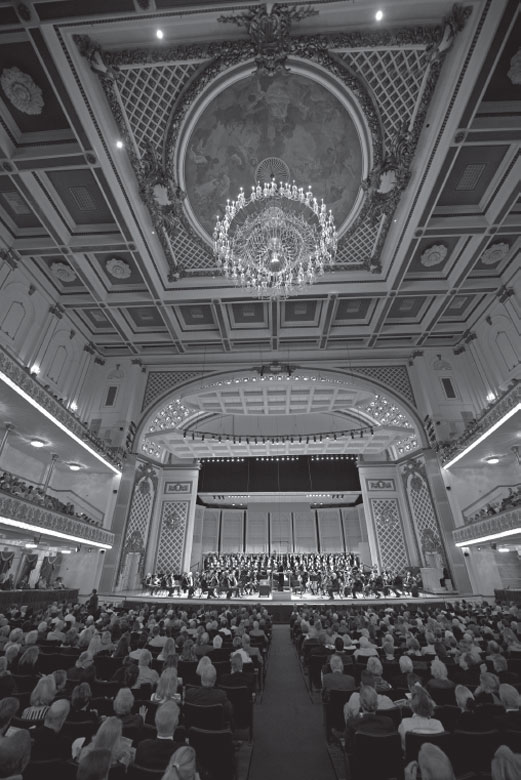
Cincinnati Music Hall, Springer Auditorium, during May Festival 2016. Cincinnati Symphony Orchestra.
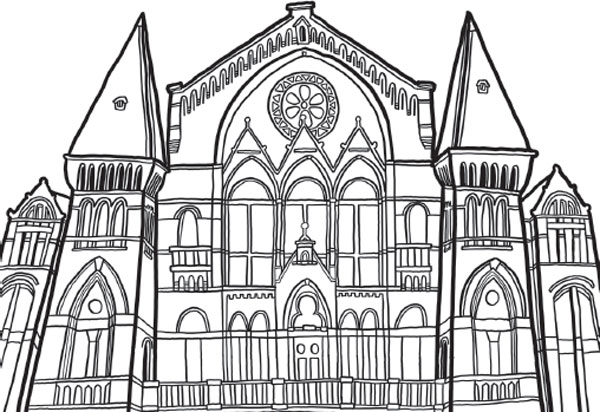
Cincinnati Music Hall, designed by Samuel Hannaford, underwent a major renovation in 2017. Illustration by Allison Ranieri.
In 1876, construction on Music Hall was interrupted when human remains were found. The city refused to have anything to do with the bones. Future president William Henry Harrison, who sat on the boards of both Spring Grove Cemetery and the Music Hall Association, took care of getting them reburied in one plot at Spring Grove.
Next page
